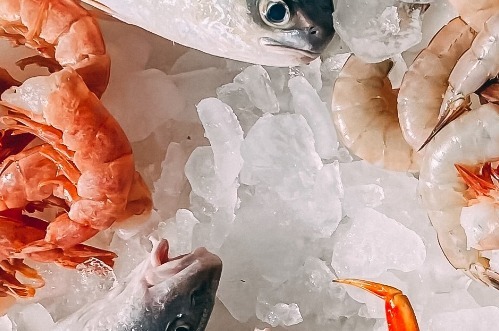W27: Shrimp Update

In W27 in the shrimp landscape, Vietnam Customs reports a 41% decline in shrimp exports to the US, reaching USD 257 million as of June 15, 2023. This decline is attributed to high inflation, tight spending, and increased demand in the first half of 2022. Meanwhile, shrimp exports to the US reached USD 68 million in May-23, a 31% YoY decrease, although there is an increased supply of Vietnamese shrimps and US interest rate hikes. The average price of shrimp imports into the US in the first four months of 2023 reached USD 8.3/kg, a 14% decrease over the same period last year. Meanwhile, Indonesia exported 87.6 thousand mt of shrimp to the US in the first half of 2023, a reduction of 19% YoY. May-23 saw a 5% increase in shrimp exports, but Jun-23 saw an 18% decline.
Ecuador's shrimp sales to China increased by 43% in volume from January to May 2023, with 698.1 million pounds shipped. However, the export value only increased by 20% due to lower prices over the past 15 months of an average of USD 0.70/lb. China's participation in the Ecuadorian shrimp market increased from 53% to 64%, but it didn't lead to significant earnings. The US market share dropped by 7%, and Europe's major countries are buying less due to inflation. Total sales in the first five months of 2023 only grew by 1%, compared to a 62% increase in 2021. The Ecuadorian shrimp industry is forecasted to keep facing challenges, including high costs and insecurity. Furthermore, India and Ecuador have estimated 30% to 50% hanging non-cultivated ponds, while EI Nino damage affects 30% of farming areas, affecting shrimp exports to the US. Despite achieving a record USD 8 billion in seafood exports in FY23, the Indian seafood industry is concerned about lower global demand for shrimp, falling prices, and a decline in local production. Major markets like the US and China are experiencing slowdowns, and there are payment issues with Chinese importers.
Lastly, Iran's top shrimp importers include Russia, the UAE, China, Qatar, and Turkey, and the country is making efforts to expand exports to countries like Oman and Malaysia. Currently, Iran has 92 modern shrimp processing units with a daily processing capacity of 1,350 tons. Iran's fishery production has increased, with high-quality products finding demand in new markets such as China and South Korea.



